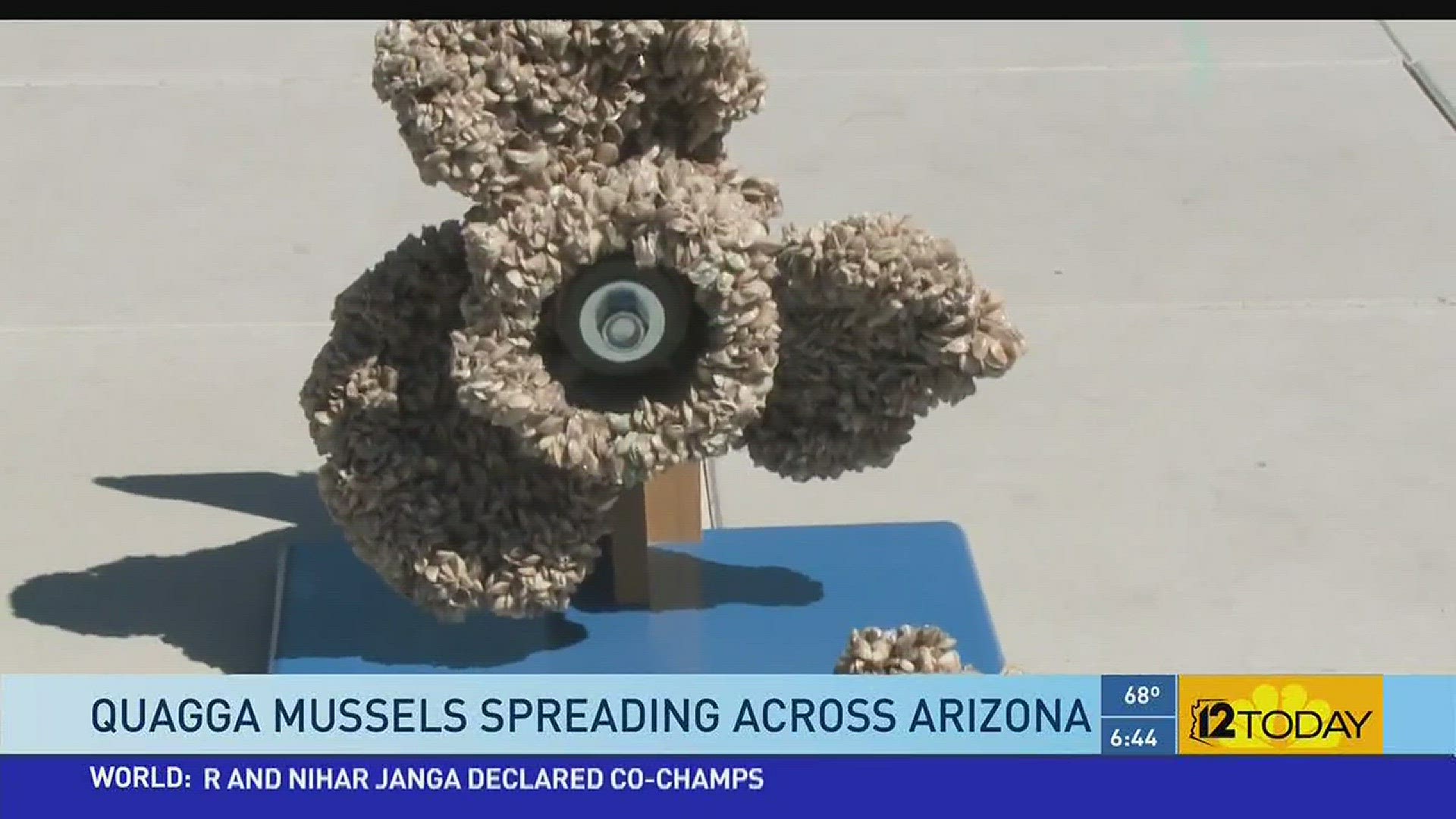APACHE JUNCTION, Ariz. - On a bright sunny day, there may be nothing more relaxing than cruising Canyon Lake, a reservoir nestled in the Tonto National Forest
"This is why we're in Arizona," said Tom McMahon, a biologist and the aquatic invasive species program coordinator with Arizona Game and Fish.
But there's something out in the lake that's not supposed to be in Arizona -- quagga mussels. They're an invasive species that has now spread not just to Canyon Lake, but also to Apache and Saguaro lakes.
"Frustration" is how Mr. McMahon described his first reaction to finding evidence of the mussels in more lakes. "They didn't come on a duck butt," he said, "they probably came on a boat somehow."
Just like they did back in 2007, when the mussels migrated from the Great Lakes and infested Lake Mead. Since then, the state has spent hundreds of thousands of dollars every year on its "Don't move a mussel" campaign.
The goal has been to get boaters to clean, drain and dry their boats, so they could prevent the mussels from moving yet again.
But it wasn't enough. The mussels hitched a ride on boats that weren't cleaned and made their way to Lake Powell, Lake Pleasant and now to Canyon Lake.
"The problem with the quagga mussels is they can really clog things up," Mr. McMahon said.
For instance, Game and Fish put a boat propeller in Lake Mead for 13 months and mussels made a mess of it. They could very well do the same to all the boats at Canyon Lake. And quickly.
Quagga mussels reproduce rapidly. A female can produce a million eggs every year.
It's not just boats that are at risk. The mussels filter plankton at an alarming rate, making it harder for fish to survive, essentially wreaking havoc on lakes' ecosystem.
But if you think the mussels are just a menace for the lakes and people on them, think again.
Quagga mussels have also moved into the Valley's canals, putting drinking water in danger and posing potentially big problems for everyone, especially SRP.
"We found the first ones in 2013 ... very few at that time," said Brian Moorhead, an environmental scientist with SRP. "As those numbers increase, that's where we start seeing the greater potential for them attaching to grate structures, fish grates, radio gates, pretty much any hard surface."
That's going to give Moorhead a lot of headaches. Part of his job to try to keep quagga mussels from reaching a full-blown infestation in the federal reclamation project's 1,200 mile lateral system and 132 miles of canals.
"We're very concerned about them," Moorhead said.
If the mussels were to block or even reduce the water flow in the canals, pipes and dams, SRP would be forced to drain the waterways or use chemicals to kill the mussels -- both of which would be extremely expensive.
"We try to avoid passing any of those costs on to customer," Moorhead said. "But again, those costs do develop and they're maintenance costs. Somebody has to pay for it."
Already, quagga mussels have cost the country billions. In fact, for just a six-year span in the 1990s, Congress estimates quagga mussels cost industry nationwide more than $5 billion.
That cost is only going to increase, because once mussels are in a lake, like Canyon, they're pretty much there forever. They have virtually no known predators.
McMahon, the Game and Fish biologist, said of the damage the invasive mussels can do, "It kind of hits you viscerally that it could ruin my experience."
And destroy a gorgeous oasis in the middle of the desert.
Learn more about quagga mussels here:

